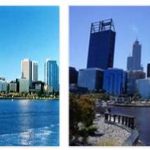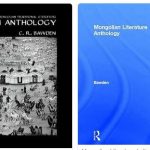The factors that most characterize the Australian cultural world in its complexity and diversity can be grasped in the empathic feeling with nature and the landscape, and in the relationship on the one hand with the Aborigines, on the other with European cultural models, which from subordinate becomes constructively dialectical.
The 19th century
Australian literature initially took the form of a simple transplant of ways and tendencies of the motherland. The great models of the eighteenth century dominated undisputed, until the middle of the century. 19th Ch. Harpur and AL Gordon were the first to introduce elements of local landscape, life and customs into their work and thus marked the birth of an Australian poem. The ballad was one of the forms most cultivated by early Australian poets, especially by ‘Banjo’ Paterson and H. Lawson. In the same decades, the narrative counts some works of sure value such as The recollections of Geoffrey Hamlyn (1859) by HE Kingsley, For the term of his natural life (1874) by M. Clarke and Robbery under arms (1888) by R. Boldrewood, while the aforementioned Lawson gave some valuable collections of short stories. For Australia 2005, please check ehealthfacts.org.
The 20th century
2.1 THE NARRATIVE In the first half of the twentieth century, J. Furphy occupies a position of particular importance, who with Such is life (1903) offered a unique novel for the mixture of documents, anecdotes and fantasy, M. Boyd (who wrote under the pseudonym M. Mills) and HH Richardson (pseudonym of EFL Robertson; author of one of Australia’s most important novels: The fortunes of Richard Mahony trilogy, 1917-29).
After the Second World War, the knowledge of Australian literature spread beyond national borders, thanks to the resonance obtained by the work of expatriate writers, such as M. Boyd and especially C. Stead, already famous with The man who loved children (1940). Even more decisive was the awarding of the Nobel Prize for Literature (1973) to P. White. An obligatory point of reference for the new generations since the novel The aunt’s story (1948), White welcomes the great themes of tradition, elaborating them in a mixture of realism and symbolism that becomes the most recognizable connotation of contemporary Australian literature. In the fervent narrative season inaugurated, together with White, by H. Porter with hisThe cats of Venice (1965), X. Herbert stands out for the monumental Poor fellow my country (1975), in which he revisits the oppression of colonialism; F. Hardy, author of Legends from Benson’s Valley (1963); GH Johnston, with the autobiographical novel My brother Jack (1964); C. McCulloughs, author of the most famous Australian saga, The thorn birds (1977); the prolific D. Ireland, who uses innovative techniques to represent the violence of industrial society.
A notable space is occupied by the women’s novel, which accentuates the assumption of unconventional, transgressive and ‘bottom up’ perspectives (B. Hanrahan: Chelsea girl, 1989; E. Jolley: Palomino, 1987; My father’s moon, 1989). The reality of the weak and the marginalized is observed by T. Astley (It’s raining in Mango, 1987; Reaching tin river, 1990; Coda, 1994) and by H. Garner (The children’s Bach, 1984; Cosmo Cosmolino, 1992). B. Farmer (Place of birth, 1990) searches for new rhythms and constructive motifs by mixing the tones of comedy with those of the gothic and the absurd, while K. Grenville in his short stories and novels gives voice to the desires and frustrations of marginalized women (Bearded ladies, 1984; Dark places, 1994).
The claim of centrality for what had hitherto been kept on the sidelines finds its most direct manifestation in the flowering of an aboriginal literature, marked by political commitment and a rhythmic-formal research that involves oral, musical and mimic sources. Among the most significant authors are J. Davis (Jagardoo, 1977; John Pat and other poems, 1988; Black life, 1992); Oodgeroo Noonuccal, an aboriginal name assumed by the writer K. Walker (My people: a Kath Walker collection, 1970; Master of the ghost dreaming, 1991); C. Johnson, author of the first novel written by an aboriginal (Wild cat falling, 1965), who later adopted the tribal name of Mudrooroo Nyoongah to tell the story of the conquest from the point of view of the natives (Doctor Wooreddy’s prescriptions for enduring the ending of the world, 1983); K. Gilbert (The blackside, 1990), also author of a famous oral history text (Living black: blacks talk to Kevin Gilbert, 1984).
The re-emergence of the indigenous cultural heritage corresponds to the progressive assumption, by the dominant Anglo-Saxon culture, of a perspective ‘from the margins’, which is considered significant both in itself and as capable of providing a new perspective to the entire nation. This path can be found in various ways in the novels of T. Keneally (The chant of Jimmie Blacksmith, 1972; Schindler’s ark, 1982, better known with the subsequent title Schindler’s list ; Woman of the inner sea, 1992; A river town, 1995), or in the short stories by F. Moorhouse (Selected stories, 1982; Late shows, 1992). D. Malouf, also author of dramas and poems, proposes a further relativization of the sense of international and local history (Fly away Peter, 1982; The great world, 1990; Remembering Babylon, 1992); P. Carey introduces in his novels (War crimes, 1979; Oscar and Lucinda, 1988; Jack Maggs, 1997; True history of the Kelly gang, 2000) an obsessive and surreal element that deforms reality and demystifies history, revealing it as fiction and play.
The progressive detachment from the Western world has favored a new perception of the Australia as a natural, cultural and political bridge between Asia, America and Europe, opening it to the cultural influences of countries belonging to the Pacific-Asian sphere. To welcome the new requests are writers such as B. d’Alpuget (Turtle beach, 1981), also active as a journalist; CJ Koch (The year of living dangerously, 1978; Highways to war, 1995); R. Stow, who projects the Taoist doctrine into his stories, and T. Maniaty (All over the shop, 1993). At the same time, the emergence of problems linked to industrialization reinforces the ancient ambivalence towards a nature of which we no longer see only the exuberance or the challenge, but the emptying and the loss. Thus in the darker and more pessimistic fiction of J. McQueen (The clocks of death, 1990-92) and in the novels of T. Winton (An open swimmer, 1982; In the winter dark, 1988; The riders, 1993; Blueback, 1997).
2.2 POETRY In poetry the double relationship with tradition is visible (first of English lyric, then of American one), of which the closed forms are reused (the verse, the rhyme, the blank verseand regular meters), but in which different rhythmic and symbolic scans are also sought, referring on the one hand to a renewed romantic visionarity or to a modernist metaphysics, on the other to a postmodern aesthetic where several languages coexist, from that of orality to that of media and image. Among the most authoritative figures of an early Australian poetic season stand out AD Hope, whose poetry is rich in literary, biblical and mythological allusions, drawn into traditional rhythms and forms; J. McAuley, who uses Greek mythology to criticize modern civilization; F. Webb, author of poems of historical inspiration and intimate lyrics, and above all J. Wright, poet, essayist, novelist, tenaciously intent on safeguarding the physical and moral integrity of her country. D. Stewart and D. Campbell. The poetry of V. Buckley and M. Dransfield appears strongly marked by the American models. Open to American and European influences but no less sensitive to the indigenous lesson of previous generations is the poetic production of Les Australia Murray, which recovers the aboriginal heritage (The boys who stole the funeral, 1980), and of Malouf (Poems 1959-1989, 1992), who chose the Mediterranean world, and in particular Italy, as the place of his inspiration (also as a narrator).
2.3 THE THEATER The theater, subject to the dominant English culture for longer than other genres, has expressed its vitality since the 1960s: while P. White and the poet D. Hewett bring their thematic and formal research onto the scene, a group of new authors, the new wave, adopts the vernacular to revisit the founding themes of national culture: particularly significant are J. Hibberd, one of the founders of the company La Mama of Melbourne (1968), D. Williamson (Emerald city, 1987; Siren, 1990), Australia Buzo and J. Romeril. Far from tradition is the theater of L. Nowra (Inner voices, 1977; The golden age, 1985), who uses masks and techniques of oriental dramaturgy, while M. Gow dynamizes his own language with metateatral quotations (Away, 1986; 1841, 1988) and S. Sewell confronts the dramatic historical events that occurred in Eastern Europe.











